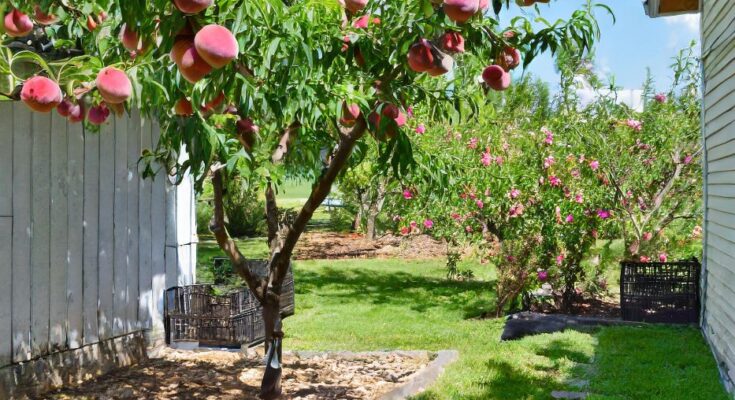|
The allure of perfectly ripe, juicy peaches picked straight from the tree is undeniable. Contrary to what you might think, creating a lush peach grove in your own backyard isn’t just a dream – it’s an accessible goal. Growing your own peaches means that you know exactly where your fruit comes from and you can enjoy the incomparable taste of peaches that have ripened on the tree, absorbing the warm rays of the sun until perfectly sweet.
Implementing the following ten techniques will transform your aspirations of a thriving peach grove into a fruitful reality.
ADVERTISEMENT
1) Select the Right Variety
Research the different varieties of peach trees to determine which is best suited for your region’s climate. Consider factors such as chill hours (the number of hours below 45°F (7°C) during the dormant period), hardiness zone, and resistance to diseases. Local agricultural extension services can often provide valuable advice.
2) Plant in a Sunny Location
Peach trees need full sun to produce energy for fruit development. Choose the sunniest part of your garden, where trees can receive at least six hours of sunlight a day. Avoid low areas where frost can settle and areas shaded by buildings or other trees.
3) Ensure Proper Soil Conditions
Peach trees prefer well-drained, sandy soil with a pH level between 6.0 and 7.0. Test your soil and amend it as necessary with compost, well-rotted manure, or other organic matter to optimize fertility and drainage.
4) Space Trees Adequately
Proper spacing helps prevent the spread of disease and ensures that each tree gets enough sunlight and air circulation. It is generally recommended to space peach trees about 15 to 20 feet apart.
5) Prune Regularly
Annual pruning is crucial for maintaining tree health and encouraging fruit production. Pruning allows sunlight to reach the center of the tree and stimulates the growth of new, strong branches that can support the weight of the fruit.
6) Irrigation Is Key
Consistent watering during the growing season, particularly as the fruit starts to swell, is important. However, avoid overwatering, as this can lead to root rot. A drip irrigation system can provide steady, directed moisture without waste.
7) Fertilize According to Need
After the first year, fertilize your peach trees in early spring just before the growing season begins. Use a balanced 10-10-10 fertilizer or an organic equivalent, making sure to follow instructions carefully to prevent root burn.
8) Thinning the Crop
It may seem counterintuitive, but removing a portion of the young fruit early in the season will lead to larger and better-quality peaches. Thin so that peaches are spaced about 6 inches apart on the branch.
9) Combat Pests and Diseases
Stay vigilant for signs of pest infestation or fungal diseases. Use appropriate organic or chemical treatments as necessary, always following environmentally safe practices and manufacturer instructions.
10) Harvest at Peak Ripeness
Picking peaches at the right time is critical for the best flavor. Peaches ripen on the tree and can be harvested when they emit a sweet fragrance and give slightly to a gentle squeeze.
By following these ten detailed techniques, you can develop a peach grove that not only produces abundant and delectable fruit but also serves as an enchanting addition to your landscape. Remember, a little effort goes a long way, and with patience and care, you can savor the unmatched flavor of homegrown peaches each season. Enjoy the fruits of your labor, and remember: Nothing beats the taste of a peach fresh off the tree!
|
Ditch the store-bought peaches. Implement these 10 techniques for a thriving peach grove.



